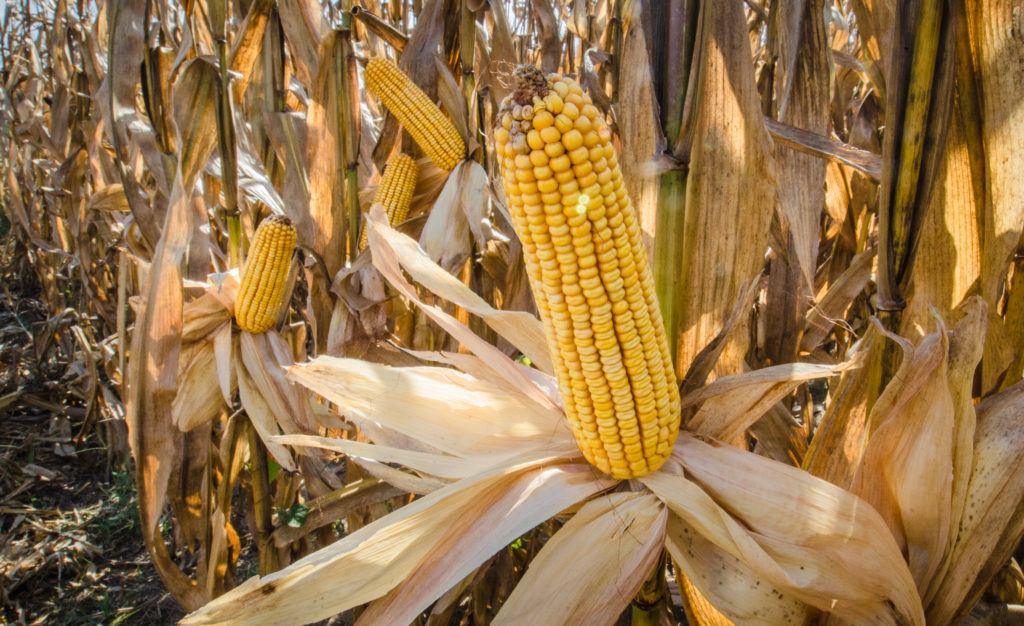
Senate Agriculture Committee Introduces Draft Farm Bill with Key Updates for Bioethanol and Biofuels
Published by Todd Bush on November 21, 2024
The Senate Agriculture Committee has presented a draft of the Rural Prosperity and Food Act, a proposed Farm Bill that aims to reshape policies regarding bioethanol, advanced biofuels, and sustainable agriculture.
This draft introduces expanded definitions for critical terms like “lifecycle greenhouse gas emissions,” “ultra-low carbon bioethanol,” and “zero-carbon bioethanol.”
These updates are essential to determine which projects qualify for the USDA’s loan guarantee program.
The proposed bill significantly revises the USDA’s biorefinery loan guarantee program, now accommodating a broader range of projects.
It extends eligibility to initiatives producing ultra-low and zero-carbon bioethanol and other advanced biofuels and biobased products.
This adjustment reflects the increasing demand for renewable energy solutions aligned with long-term climate goals.
>> RELATED: USDA Funds $650,000 Study to Analyze U.S. Business Decarbonization

Major Changes to the USDA Loan Guarantee Program
The bill removes the earlier requirement that projects must be “technologically new,” opening opportunities for established technologies to qualify.
This change allows producers to scale up renewable chemical and biobased product manufacturing alongside biofuel production.
These updates aim to modernize and streamline access to critical funding for innovative bioenergy solutions.
Another significant inclusion is sustainable aviation fuel (SAF) as a recognized output. SAF has gained momentum in recent years as a practical solution to decarbonize the aviation sector.
The draft bill also adjusts the scoring process for evaluating applications to prioritize impactful projects better.
The maximum loan guarantee has been increased to €400 million, with provisions for additional grant funding to complement the program.
This enhanced support framework could lead to faster adoption of renewable technologies in the U.S.
Chairwoman Debbie Stabenow emphasized the importance of these updates, saying, “These changes reflect our commitment to building a cleaner, more sustainable energy future while supporting rural prosperity.”
Extensions to Key Bioenergy Programs
Beyond loan guarantees, the draft bill updates multiple existing bioenergy initiatives. These include:
- The Bioenergy Program for Advanced Biofuels: Expanded to support emerging technologies.
- The Biodiesel Fuel Education Program: Refocused to increase awareness and adoption.
- The Rural Energy for America Program (REAP): Enhanced to promote rural renewable energy development.
The continued investment in these programs highlights the Senate’s recognition of bioenergy as a critical pillar for reducing carbon emissions and driving rural economic growth.

>> In Other News: Return and Verified Announce First 100% Wind-Powered Direct Air Capture Hub, Designed To Scale to 500,000 Tons Annually
Addressing the Farm Bill Gap
The 2018 Farm Bill expired in September 2023, but a temporary one-year extension was granted to prevent a government shutdown.
However, that extension has now expired, and the legislative gap has raised concerns across the agricultural and energy sectors.
Stakeholders may need to wait until next year to enact a new Farm Bill.
Senator John Boozman commented on the delay: "While the extension gave us temporary relief, the need for a new, forward-thinking Farm Bill is clear. Our rural communities and energy innovators deserve clarity and stability.”
Why This Bill Matters
Including bioethanol, sustainable aviation fuel, and other biobased products in the USDA programs is more than an administrative update—it’s a signal of shifting priorities toward decarbonization.
These changes ensure that advanced bioenergy solutions remain competitive, attract investment, and help the U.S. meet its climate commitments.
This draft bill could encourage innovation and job creation in rural areas by expanding definitions and updating funding structures.
It also paves the way for broader adoption of biofuels across various industries, including transportation and manufacturing.
Looking Ahead
While the Rural Prosperity and Food Act marks an essential step forward, its implementation depends on timely legislative action.
For now, stakeholders can review the complete draft on the Senate Agriculture Committee’s website.
The outcomes of this bill will likely shape the future of rural energy initiatives and the U.S. bioeconomy for years to come.
Subscribe to the newsletter
Daily decarbonization data and news delivered to your inbox
Follow the money flow of climate, technology, and energy investments to uncover new opportunities and jobs.
Latest issues
-
The Three-Continent Move That Redefines SAF
Wishing everyone a restful holiday season.🎄🎅🎁 Inside this Issue ✈️ Cathay Goes Global With SAF in Three-Continent Fuel Deal 🧪 Proton Ventures Partners With Barents Blue For Realization Of The Bar...
-
Can One Truck Fix Hydrogen’s Biggest Problem?
Inside This Issue 🚛 Alberta's Shared Truck Model Could Crack Hydrogen Adoption ✈️ ZeroAvia Completes Financing Round 🌾 Frontier And NULIFE Scale New Biowaste Carbon Removal Approach 🔥 WAGABOX® Of ...
-
North America’s Carbon Removal Year in Review: Winners, Losers, Surprises
Inside This Issue 🌎 North America's Carbon Removal Year in Review: The Deals, Policies, and Milestones That Shaped 2025 🚢 Hapag-Lloyd And North Sea Container Line Win ZEMBA Second E-Fuel Tender 🪨 ...
Company Announcements
-
Vallourec, a world leader in premium seamless tubular solutions, and Geostock, a global specialist in underground storage of energy, have signed a Memorandum of Understanding (MoU) to strengthen th...
-
CMA CGM, DHL Step Up Ocean Freight Decarbonization with Biofuel Deal
DHL Global Forwarding and shipping group CMA CGM have agreed to jointly use 8,990 metric tons of second-generation biofuel to reduce emissions from ocean freight. The initiative is expected to cut...
-
Next-Generation Gas Turbine Control System For Thermal Power Plants Completes Functional Testing
Integration of Mitsubishi Power's control technology with Mitsubishi Electric's high-speed data processing technology Supports rapid load adjustments and diverse fuels including hydrogen Tokyo, ...
-
Proton Ventures Partners With Barents Blue For Realization Of The Barents Clean Ammonia Project
Barents Blue AS today announces Proton Ventures as new partner to the Barents Clean Ammonia Project (formerly known as the Barents Blue project). The Dutch engineering and project development compa...